We understand that buying seafood can be a little overwhelming at times. After all, there are so many options!
We want everyone to feel confident trying new kinds of seafood, so we’ve made this guide to cover some of the basics. Here, you’ll find both general seafood advice and product descriptions to help you to compare some of our key products.
General seafood advice
Cooked or green?
Prawns, bugs and several other seafood products are sold either green (raw) or cooked (ready-to-eat). We’re often asked by customers which one to choose.
Green prawns are perfect if you plan on cooking them, for example, on a barbeque or in a risotto, curry or soup. They cook quickly so they’re best added during the last part of cooking.
Green prawns are highly perishable so are caught and snap frozen immediately onboard the vessel. We sell them still frozen to ensure you get the freshest product possible. We have advice on how to thaw them below.
Cooked prawns, on the other hand, are ready-to-eat fresh straight out of the bag or in a salad. While these prawns can be heated, you’ll need to be careful with them; it’s very easy to heat them too much, leaving them over-cooked and rubbery. We’d always recommend green prawns if you plan on cooking with them.
Cooked prawns vary in colour from a light pinkish colour to dark orange-red depending on the species. You can buy these either fresh or frozen.
Transporting your seafood home
It’s important to handle your fresh seafood correctly during your journey home, particularly in the Queensland heat.
Temperature is the most important factor controlling the speed at which seafood goes bad. Chilled seafood should be kept at a temperature between 1°C and 4°C. It is necessary to maintain within this temperature range, as below 0°C products may begin to freeze and become damaged by ice crystal formation and above 5°C risks bacterial growth.
Frozen seafood must be transported, stored and handled at temperatures never warmer than -18°C.
If you’re not going to eat or cook your seafood immediately, make sure your products are kept at the correct temperature for the journey and during storage. We strongly recommend bringing an esky or cooler bag with an ice brick when you collect your seafood.
For a convenient option, purchase an Agnes Water Seafood cooler bag and some ice packs along with your seafood!
Storing seafood in the fridge
Fresh is always best and, where possible, seafood should be consumed immediately after purchase. This isn’t always practical, however, so below is some advice on how to keep your chilled seafood in the best condition possible.
General advice
Generally, fresh seafood should be kept between 1°C and 4°C and consumed within 2 days.
Store your seafood in the coldest part of the fridge, which is usually at the rear or bottom. Avoid opening the fridge door too often to maintain the temperature. If your fridge is not maintaining temperature between 1°C and 4°C, this will negatively affect the shelf life of your seafood.
Cover your seafood well. Not only will this stop your seafood from drying out but, all seafood has a smell, so it ensures that the odour won’t affect other items in your fridge.
Finally, don’t allow seafood to sit in its own juices for any length of time, as it will deteriorate more quickly. Provide drainage and remove the juices frequently.
Fish
We sell our fish commercially vacuum sealed (cryovac). This removes the air, reducing bacteria growth. If kept at the correct temperature in commercial refrigeration, sealed fish can remain fresh for up to 7 days.
Domestic refrigeration is more variable, however, so we generally advise that, if you are not going to eat your fish within 2-3 days, best to freeze it to be safe.
Prawns, bugs and crabs
We generally recommend that these products be consumed by the day after purchase.
Prawns, bugs and crabs are best kept properly drained. For example, you can place your prawns and bugs in a colander within a slightly larger bowl and cover well with plastic wrap or a wet tea towel to prevent them drying out.
If you wish to store them for longer, immediately after purchase, remove any shell and juice, then seal the meat in an airtight container. This can extend the shelf life to a total of 4-5 days dependent on your refrigeration.
Freezing seafood
While there is a perception that frozen seafood is inferior in some way to fresh product, this is untrue. In blind taste tests conducted by the Oregon State University’s Food Innovation Lab in 2019, trained panelists actually preferred seafood frozen immediately after harvest, and nutritionally it is no different.
The most important factor when freezing seafood is to make sure the seafood is as fresh as possible at the point of freezing. Freezing quickly is also of utmost importance, so always freeze product flat in a single layer in the coldest part of your freezer.
If you want to purchase your seafood frozen, you can always ask us to freeze it for you. We use commercial freezers that can freeze the product down to the correct temperature efficiently.
Frozen seafood must be transported, stored and handled at temperatures at or below -18°C. It should be noted that not all consumer freezers come down to or maintain this temperature and this can negatively impact the life of your frozen seafood.
Most frozen seafood at home should be consumed within approximately 3 months for optimum flavour and texture.
We have detailed advice on thawing your frozen product to ensure the best taste and texture below.
Fish
We sell our fish commercially vacuum sealed (cryovac). This removes the air, reducing bacteria growth and it also saves your fish from freezer burn if you choose to freeze it after purchase. Lay flat in a single layer to ensure the fish freezes quickly.
Prawns
We sell both cooked and green frozen prawns on this website so there should be no need to freeze fresh prawns at home. Our frozen prawns are caught and snap frozen immediately onboard the vessel to ensure you get the freshest product possible.
If you purchase fresh prawns and need to freeze any excess, remove any shell and juice, then seal the meat in an airtight container and place in the coldest part of your freezer.
Oysters
We do not recommend freezing our fresh oysters at home, as they are prone to freezer burn and textural changes. We can supply frozen oysters if required, which are coated with a commercial glaze to protect them during freezing.
Thawing seafood
Properly frozen and thawed seafood will be virtually indistinguishable from a fresh product. Guidance on safe thawing is provided below.
Fish, squid tubes and other vacuum-sealed products
Many of our products come commercially vacuum sealed (cryovac). These products can simply be thawed overnight in the refrigerator. Open the vacuum seal on fish prior to thawing.
Prawns, bugs and crays
We strongly recommend thawing frozen prawns and bugs in a brine (salted water) to maintain their flavour and texture.
We recommend the following:
1. Fill a sink, food-grade bucket or large bowl with cool or room temperature tap water, approximately double the volume of the seafood you want to thaw.
2. Add salt, approx. 2 tablespoons per litre of water, and dissolve. It should taste as salty as the ocean!
3. Immerse your seafood in the brine.
4. When the seafood is firm but not hard, drain and immediately cook or serve.
Well managed frozen prawns and bugs can be every bit as flavourful as fresh. This is because our frozen products are caught and immediately snap frozen on the vessel. The perception that they are somehow inferior or less flavourful has originated due to improper thawing practices, such as thawing on the bench or in plain water.
Oysters
Frozen oysters are coated with a commercial glaze to protect them during freezing. When thawing it is best to wash this glaze off in a brine (salted water).
We recommend the following:
1. Fill a sink, food-grade bucket or large bowl with cool or room temperature tap water, approximately double the volume of the seafood you want to thaw.
2. Add salt, approx. 2 tablespoons per litre of water, and dissolve.
3. Drop the oysters into the brine and let them sit for approx. 3-5 minutes. This amount of time will be enough to thaw the outside and remove the glaze.
4. Leave them in the brine to thaw fully or remove them, cover and allow to thaw completely in the fridge.
Peeling a prawn
Hold the body firmly just behind the head then twist off the head. Pull back the legs removing the centre section of the shell in the same motion. Squeeze the tail segment at the base and gently pull out the flesh.
We recommend deveining your prawns (i.e. removing the digestive tract that runs along the back of the prawn). You can do this by simply pinching the vein at the head and peeling it back. You can also run a sharp knife along the prawn’s back and then simply lift out the vein.
Opening a Moreton Bay Bug
Bugs can be halved by laying the bug on its back, unfurling/flattening the tail and using a sharp knife or cleaver to split the length of the shell from head to tail. Then, simply remove the digestive tract running down the middle of the tail meat (just like deveining a prawn) and clean out the head cavity (either with a teaspoon or rinsing it out in a brine).
Alternatively, to remove the tail whole, cut down either side of the tail using kitchen scissors, peel the underside of the tail back and remove meat.
If you don’t have a knife, don’t despair. Peeling a bug is actually as easy as peeling a prawn! Lay the bug on its back. With your thumbs, feel for the first soft section of the shell, just under the head. Press your thumbs into this section until it cracks and breaks the exo-membrane holding the head to the rest of the shell). Grip the head of the bug with one hand and the tail in your other, then lever or twist the head and tail until the head detaches. Throw the head away and lay the bug back down and use your thumbs to crack each section of shell down the tail (watch out for the spikes on the first two sections). Now, just hold the tail on either side and crack the shell back, revealing the meat. Remove any of the digestive tract from the head and devein, just like you would a prawn.
Can I eat an unopened mussel?
Yes, mussels that do not open when heated can actually be eaten. Don’t waste the tasty morsels inside an unopened shell – prise them open and enjoy!
If you’re concerned about a mussel being off (or dead), the smell will easily give it away. Throw away any that don’t smell ocean fresh and sweet but otherwise they’re all good to eat.
My seafood is dry, tough or rubbery after cooking
These are all signs that your seafood is overcooked!
Seafood is generally very quick to cook. It’s also worth keeping in mind that seafood will continue to cook after being taken off the heat. Given this, it is always better to slightly undercook rather than overcook.
If you’re feeling uncertain, a digital temperature probe can be a useful addition in the kitchen.
Product descriptions
We are lucky enough to have a range of local seafood right on our doorstep and a large variety of fish, in particular.
We work with local fishers who source an array of local, wild-caught product each time they go out, so our stock is seasonal, weather-dependent and varies from day to day. The below list does not represent every product we may stock and not all of the below will be available on any given day.
Product names represent the common name known in this region for ease of reference, with the official standard fish name, per the Australian Fish Names Standard AS5300, listed underneath.
Skip to:
– fish
– prawns
– bugs, crabs & crayfish
– oysters, scallops & mussels
– squid & octopus.
FISH

Amberjack
Amberjack
A rich, moderate, slightly sweet flavour and slightly oily, dry flesh. Fillet has an amber hue that turns white when cooked. Firm, meaty texture similar to tuna, breaking into medium flakes. Holds together during cooking; marinating prevents drying out. Popular for sashimi.
Origin: Queensland
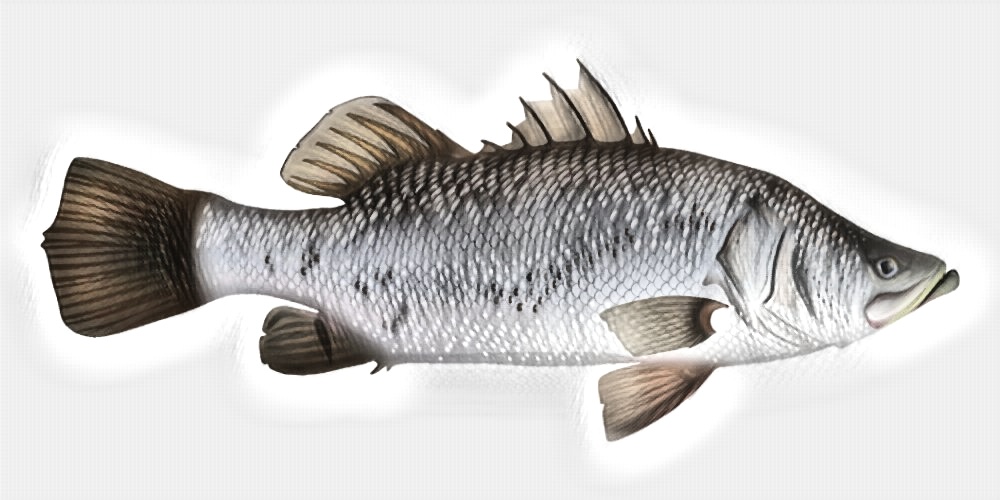
Barramundi
Barramundi
Popular, versatile fish with a mild flavour and low oiliness and moderate fat content. Soft-medium texture, moist flesh that breaks into medium-large flakes. Flesh holds together well during cooking, so suitable for barbecuing, soups, curries and casseroles.
Origin: Queensland

Blue Salmon
Blue Threadfin
Considered by some to be superior to Barramundi, a good eating tropical finfish with a mild flavour and moderate oiliness. White, firm, moist flesh breaks into large flakes. Flesh holds together well during cooking.
Origin: Queensland

Cobia
Cobia
Also known as Black Kingfish.
An underrated fish, with a unique mild flavour that’s slightly sweet and buttery and moderate oiliness. White, firm, meaty flesh that’s moist and flaky. Flesh holds together well during cooking. Excellent choice for sashimi.
Origin: Queensland

Collar Bream
Collar Seabream
Small reef fish. When well filleted, has a mild, slightly sweet flavour and low oiliness. Flesh is firm, moist and white with fine flake.
Origin: Queensland

Coral Trout
Common Coral Trout
Among the most sought-after reef fishes, with a delicately sweet flavour and low oiliness. Pearly white flesh that is firm and moist and separates into fine flakes. The cheek flesh is highly regarded. Attractive fish for cooking whole.
Origin: Queensland

Coronation Trout
Yellowedge Coronation Trout
Extremely similar to the Coral Trout with a slightly softer fillet. Delicately sweet flavour and low oiliness. Pearly white flesh that is firm and moist and separates into fine flakes.
Origin: Queensland

Darktail Snapper
Darktail Snapper
Similar to Mangrove Jack, an attractive fish with a mild flavour and low oiliness. Moist flaky, white, flesh with medium texture and medium-large flake depending on the size of the fish.
Origin: Queensland
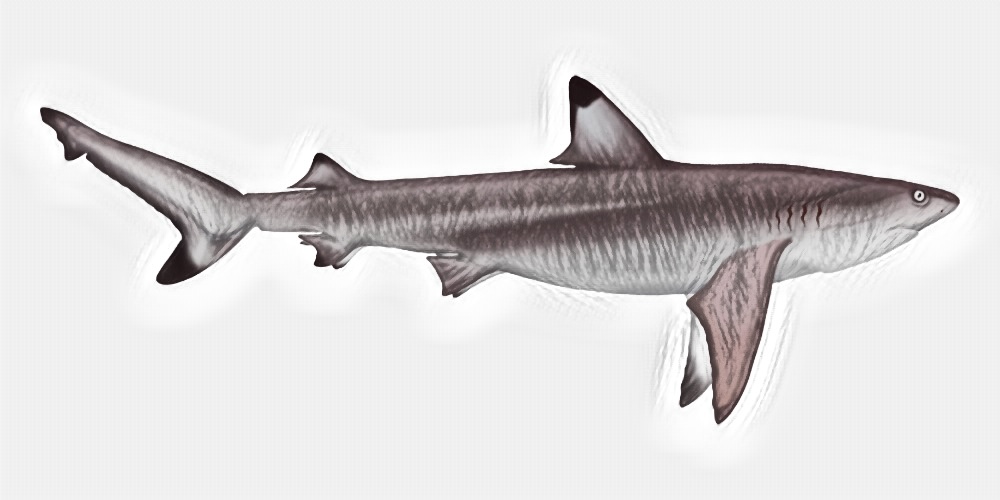
Flake
Blacktip Reef Shark
Very good eating with a mild but meaty, chicken-like taste, slightly sweet flavour and low oiliness. Firm, moist flesh that breaks into large flakes.
Origin: Queensland

Giant Trevally
Giant Trevally
A moderate-strong flavour and high oiliness. Produces white, dry, medium-textured dense flesh with large flakes. Marinating or wrapping prior to cooking helps to prevent drying out. Popular choice for ceviche.
Origin: Queensland

Goldband Snapper
Goldband Snapper
A delicate mild-moderate flavour, sweet sea taste with low oiliness. Pinkish flesh when raw. White, moist, firm flesh with large flakes when cooked and edible skin. Holds together well during cooking and highly versatile. A popular choice for sashimi and works well in mousseline and fish cakes.
Origin: Queensland

Golden Trevally
Golden Trevally
A sweet flavoured fish with high oiliness. Produces white, dry, fine flesh. Marinating or wrapping prior to cooking helps to prevent drying out. Popular choice for ceviche.
Origin: Queensland

Goldspot Cod
Goldspotted Rockcod
Also known as Estuary Cod, noting we stock only reef-caught Goldspot Cod. Mild to moderate sweet flavour and low oiliness. Flesh is firm, moist, pearly white and breaks into large flakes when cooked. Flesh holds together well during cooking.
Origin: Queensland

Grassy Sweetlip
Grass Emperor
A member of the sweetlip family. A crowd pleaser and great table fish. Reef-caught with a mild, slightly sweet pleasant flavour and low oiliness. White, firm, moist flesh with large flakes. Flesh holds together relatively well for a reef fish.
Origin: Queensland

Greasy Cod
Greasy Rockcod
We stock only reef-caught Greasy Cod. Mild to moderate sweet flavour and low oiliness. Flesh is firm, moist, pearly white and breaks into large flakes when cooked. Flesh holds together well during cooking.
Origin: Queensland
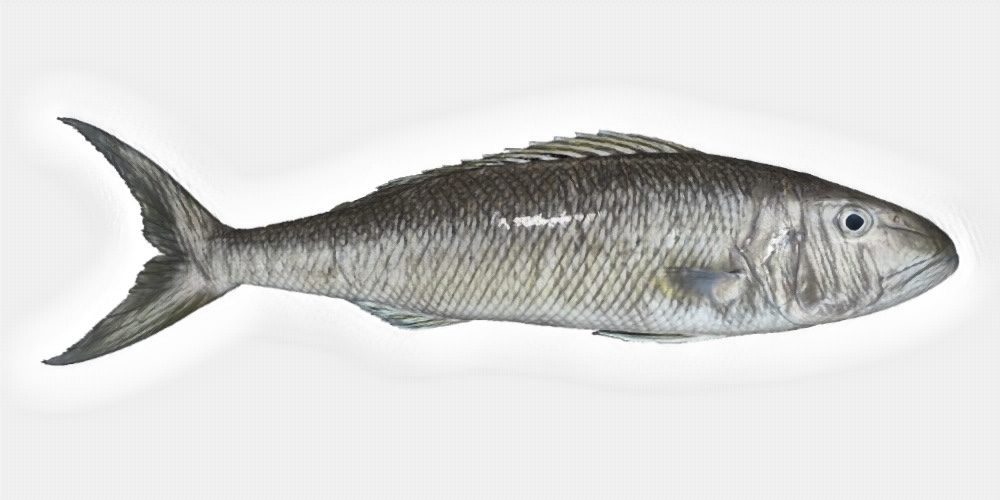
Green Jobfish
Green Jobfish
A delicate, flavourful fish, similar to Goldband Snapper, slightly sweet with low oiliness. Flesh is translucent pink when raw. Moist, moderately firm flesh when cooked with large flakes. Popular choice for sashimi.
Origin: Queensland

Grunter Bream
Barred Javelin
Also known as Queensland Trumpeter.
Once overlooked but now increasingly popular due to its great eating. Mild flavour with a distinctive sweetness and moderate oiliness. Soft-medium in texture and moist with medium flake.
Origin: Queensland

Hussar
Hussar
Also known as Yellow Banded Snapper.
A small but superb eating reef fish. Delicate, yet generous, in flavour, with a slightly sweet ocean taste and low oiliness. Moderately firm, white, flaky and moist.
Origin: Queensland

Jewel Fish
Scaly Jewfish
An increasingly popular fish with a moderate flavour and low oiliness, similar in flavour to barramundi. White, moist, firm flesh that holds together well and breaks into large flakes.
Origin: Queensland

King Salmon
King Threadfin
Pleasant, mild flavour with low oiliness. Moderately firm, glossy white flesh that’s moist and flaky, breaking into large flakes.
Origin: Queensland

Knobby Snapper
Snapper
Also known as Squire when juvenile.
Mild, delicate flavour that’s fresh and slightly sweet with low oiliness. Pinkish flesh when raw. Moist, medium-textured, moderately firm, flaky white flesh when cooked, and edible skin.
Origin: Queensland
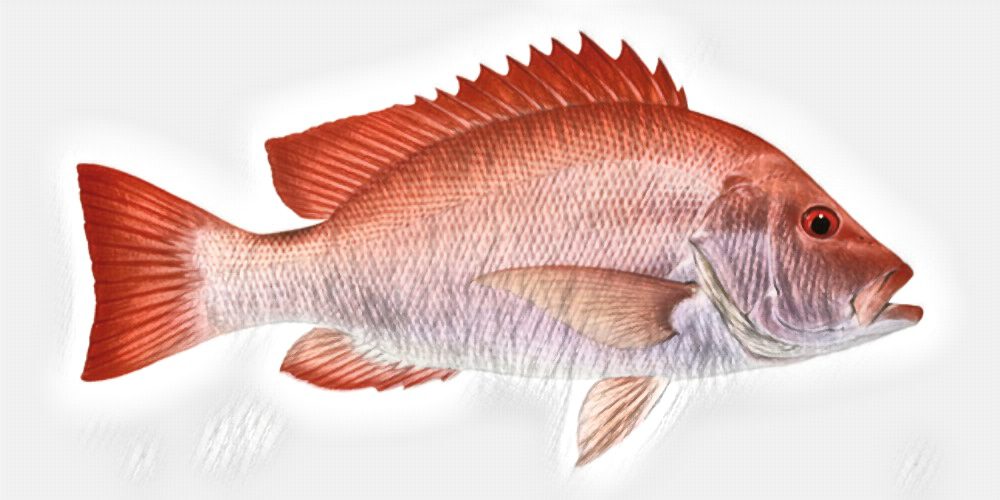
Large Mouth Nannygai
Saddletail Snapper
In the same family as Red Emperor, with similar eating qualities. Excellent eating fish with fleshy, ample fillets. Flavour is delicate, yet generous, and flesh has low oil content. Firm, flaky white flesh is moist and breaks into large flakes.
Origin: Queensland

Mangrove Jack
Mangrove Jack
Highly sought after, attractive fish with a mild flavour and low oiliness. Moist flaky, white, flesh with medium texture and medium-large flake depending on the size of the fish.
Origin: Queensland

Maori Cod
Maori Rockcod
Among the best eating rockcods. Reef-caught fish with a mild-moderate sweet flavour and low oiliness. Flesh is firm, moist, pearly white and breaks into large flakes when cooked. Flesh holds together well during cooking.
Origin: Queensland

Moses Perch
Moses Snapper
A superb eating reef fish. Delicate in flavour, slightly sweet ocean taste with low oiliness. White, moist, firm flaky flesh.
Origin: Queensland
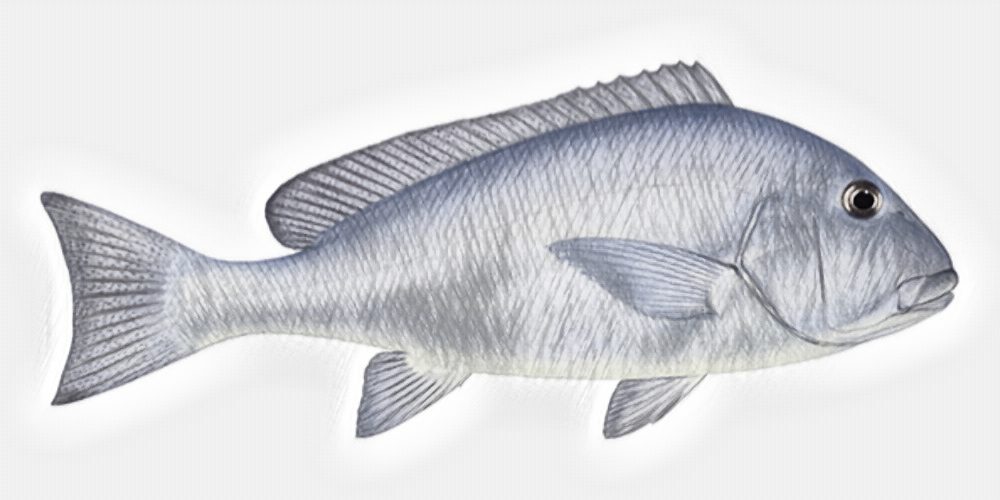
Painted Sweetlip
Slatey Bream
Reef fish with a mild to moderate flavour, a meaty chicken-fish taste and low oiliness. Flesh is cream/oyster-coloured with distinct lateral lines. Firm and flaky with medium flake size. Ideal for wet cooking, including soups and curries.
Origin: Queensland
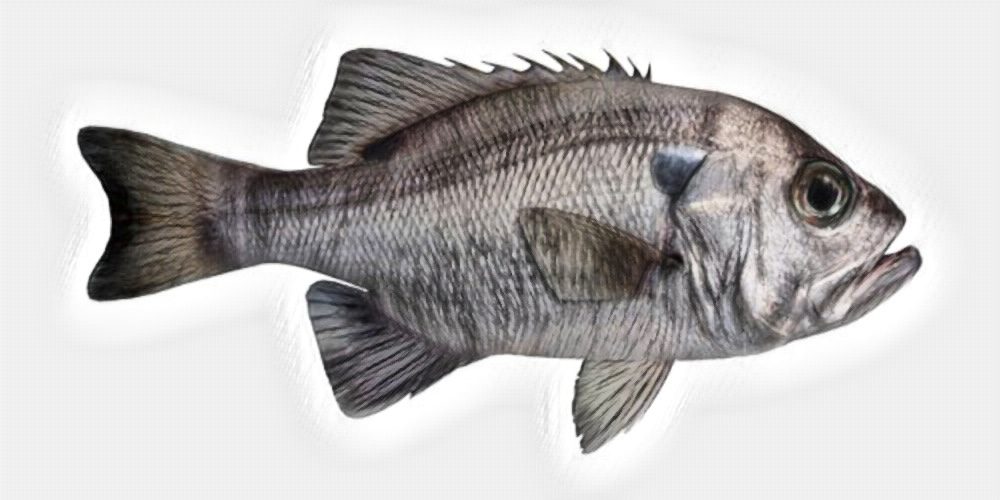
Pearl Perch
Pearl Perch
Highly prized and regarded as one of the best tasting fish in the ocean. Buttery, sweet and delicate in flavour, with low-medium oiliness. Produces white, moist, moderately firm and flaky flesh when cooked. Popular choice for sashimi.
Origin: Queensland
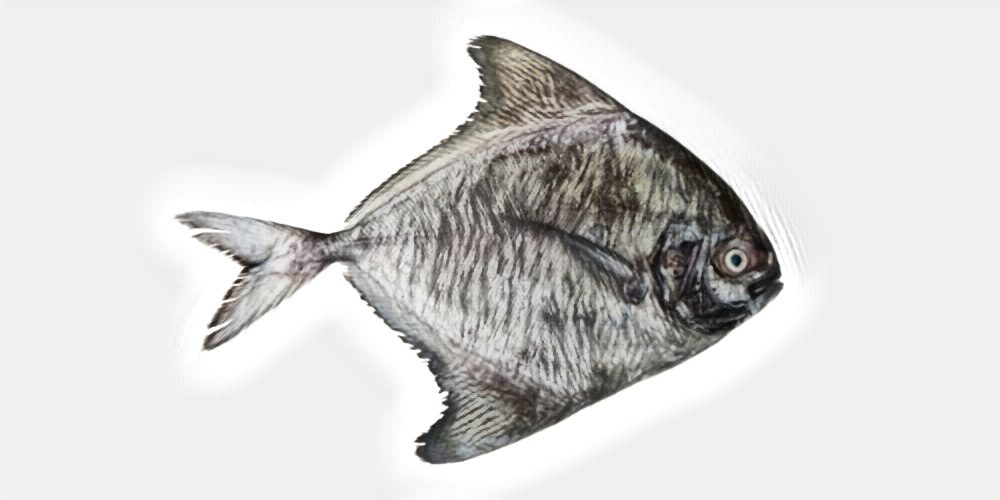
Pomfret
Black Pomfret
Good eating fish with a lightly fishy flavour and slight oiliness. Texture is moderately firm and moderately moist with medium-sized flakes. Holds together well for wet cooking, including soups and curries.
Origin: Queensland

Queenfish
Giant Queenfish
A mildly meaty flavour with low oiliness. Pink when raw turning to an oyster-coloured flesh when cooked. Firm and dry textured. Ideal for wet cooking, including soups and curries.
Origin: Queensland
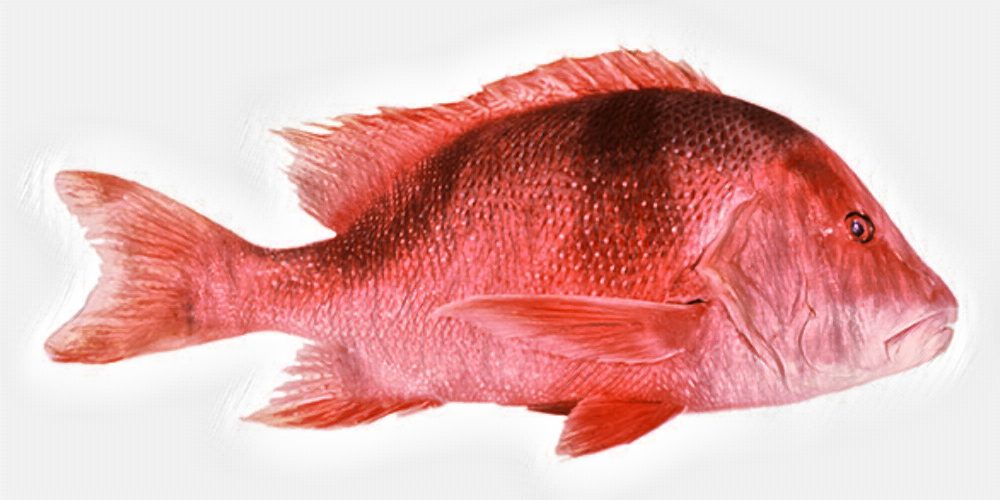
Red Emperor
Red Emperor
Highly regarded and an excellent eating reef fish. Has moderate sweet sea flavour and low oiliness. Medium-textured, moist, brilliant white flesh that breaks into medium-large flakes.
Origin: Queensland
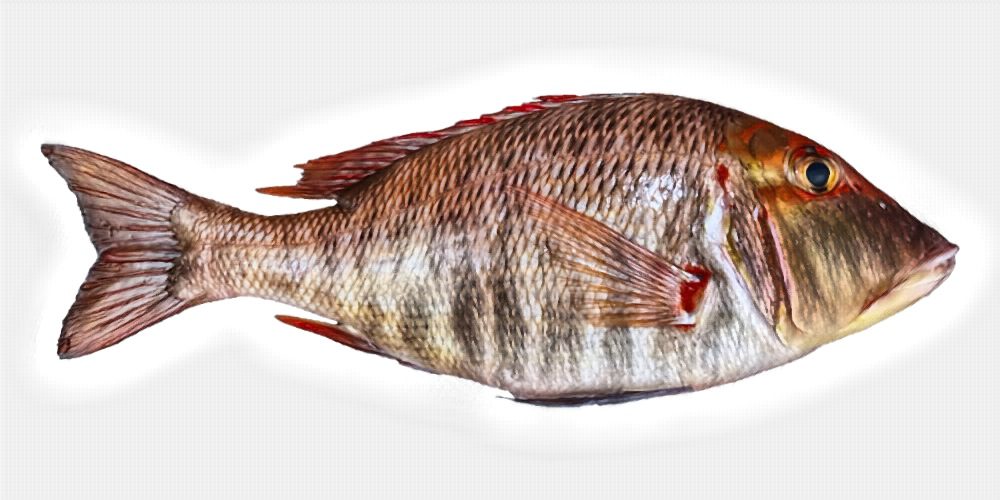
Red Throat Emperor
Redthroat Emperor
Considered the finest eating member of the sweetlip family. A reef fish with a mild, slightly sweet flavour and low oiliness. White, firm, moist flesh with large flakes. Flesh holds together relatively well for a reef fish.
Origin: Queensland

School Mackerel
School Mackerel
A highly versatile meaty fish, with a distinctive, robust flavour. Medium to very high oiliness. Medium-dry, firm flesh with a thin, edible skin. Flesh holds together well during cooking.
Origin: Queensland

Small Mouth Nannygai
Crimson Snapper
In the same family as Red Emperor and Large Mouth Nannygai. Delicate, yet generous flavour, slightly sweet with low oil content. White flesh is moist, firm and flaky.
Origin: Queensland

Spangled Emperor
Spangled Emperor
A member of the sweetlip family, similar to Grass Emperor/Grassy Sweetlip. Mild, slightly sweet pleasant flavour – stronger than Grassy – and low oiliness. White, firm, moist flesh with large flakes. Larger specimens have more sinew through the fillet, resulting in a firmer texture. Flesh holds together well for a reef fish and larger specimens are suitable for stews/curries.
Origin: Queensland

Spanish Mackerel
Spanish Mackerel
A highly versatile meaty fish, with a distinctive, robust flavour. Medium to very high oiliness. Medium-dry, firm flesh with a thin, edible skin. Flesh holds together well during cooking.
Origin: Queensland

Squire
Snapper
Juvenile (Knobby) Snapper.
Mild, delicate flavour that’s fresh and slightly sweet with low oiliness. White, moist, medium-textured flesh with coarse flakes and edible skin.
Origin: Queensland

Stripey
Stripey Snapper
Also known as Stripey Seaperch.
A superb eating reef fish. Delicate, yet generous, in flavour, with a slightly sweet ocean taste and low oiliness. Firm, white, flaky and moist.
Origin: Queensland

Tea-Leaf Trevally
Brassy Trevally
Moderate-strong flavour with high oiliness. Produces white, dry, medium-textured dense flesh with large flakes when cooked. Marinating or wrapping prior to cooking helps to prevent drying out. Popular choice for ceviche.
Origin: Queensland

Tripletail
Tripletail
Also known as Jumping Cod. A great eating and versatile fish, with a mild, sweet flavour that is very similar to Grunter Bream. White flesh with low oiliness that is moderately firm, very moist and breaks into medium flake.
Origin: Queensland

Trout Cod
Highfin Grouper
Reef-caught fish with a mild-moderate sweet flavour and low oiliness. Flesh is firm, moist, pearly white and breaks into large flakes when cooked. Flesh holds together well during cooking.
Origin: Queensland

Tuskfish
Venus Tuskfish
Also known as Parrot.
Beautiful reef fish. Very delicate sweet sea flavour. Produces white, moist flesh with very flaky fillets that break into medium sized flakes.
Origin: Queensland

Whiting
Sand Whiting
Has a delicate, sweet flavour and low oiliness. Medium-textured, moist, flaky flesh and edible skin. A small fish, its thin fillets are best protected if grilling. Works well in mousseline.
Origin: Queensland

Wirenet Cod
Longfin Rockcod
Reef-caught fish with a mild-moderate sweet flavour and low oiliness. Flesh is firm, moist, pearly white and breaks into large flakes when cooked. Flesh holds together well during cooking.
Origin: Queensland
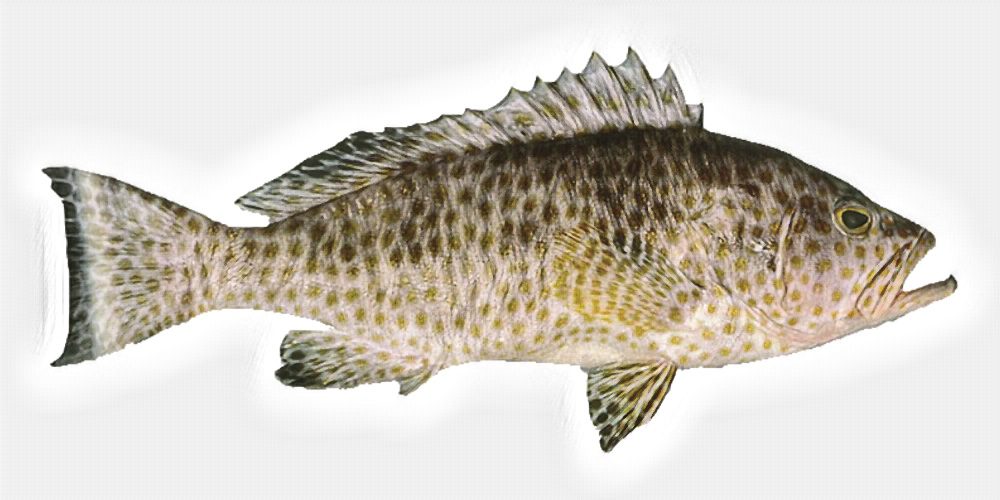
Yellowspot Cod
Yellowspotted Rockcod
Reef-caught fish with a mild-moderate sweet flavour and low oiliness. Flesh is firm, moist, pearly white and breaks into large flakes when cooked. Flesh holds together well during cooking.
Origin: Queensland
PRAWNS

Banana Prawn
Banana Prawn
Pale yellow in colour. Has a mild, sweet flavour, low to medium oiliness and moist flesh with a medium texture. Slightly softer shell in comparison to other species of prawn.
Origin: Queensland

Endeavour Prawn
Red Endeavour Prawn
Pale orange in colour. Not the most attractive but considered by many to be the best-tasting prawn. Has a distinctive sweet flavour, low-medium oiliness and moist, firm flesh. Shell is firm, textured and easy to peel.
Origin: Queensland
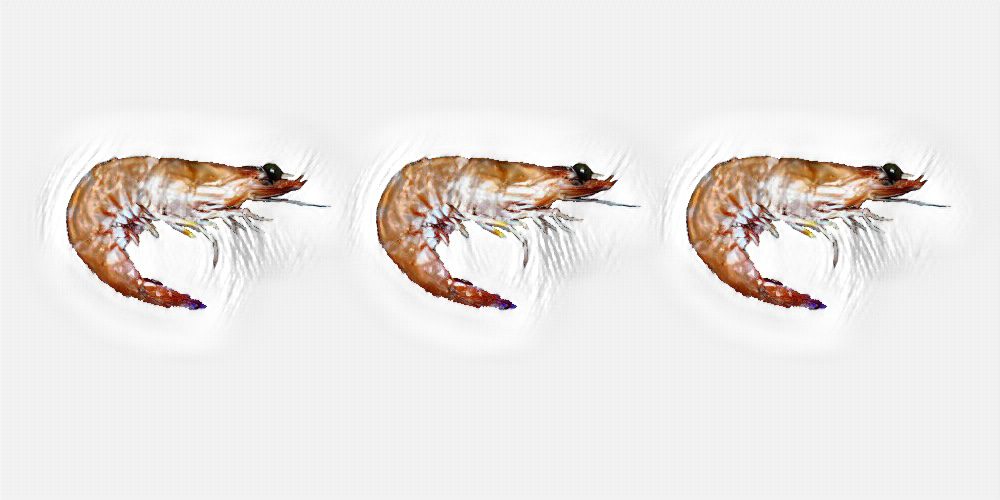
King Prawn
King Prawn
Also known as Ocean King, Eastern King.
Pink/peachy in colour. Beautiful balance of sweet and salty, with a delicate buttery flavour, low-medium oiliness, moist flesh with a medium-firm texture. Shell is firm and easy to peel.
Origin: Queensland

Redspot King Prawn
Redspot King Prawn
Similar to the King Prawn but with an attractive red spot on the tail section and a slightly more intense flavour.
Origin: Queensland

Tiger Prawn
Tiger Prawn
The looker of the group, with distinctive stripes and dramatic red-orange colouring. Has a rich, salty, meaty flavour, low to medium oiliness and moist, firm flesh. Shell tends to be a little softer than other species.
Origin: Queensland
BUGS, CRABS & CRAYFISH

Moreton Bay Bug
Moreton Bay Bug
A moderate, sweet, rich buttery flavour with low oiliness. Flesh is firm and succulent. Versatile in terms of cooking methods and excellent both hot and cold.
Origin: Queensland

Mud Crab
Mud Crab
Medium-strong, sweet, rich flavour and low oiliness. Flesh is moist and flaky. Body meat has a medium texture and milder flavour, while claw meat is firmer and stronger.
Origin: Queensland
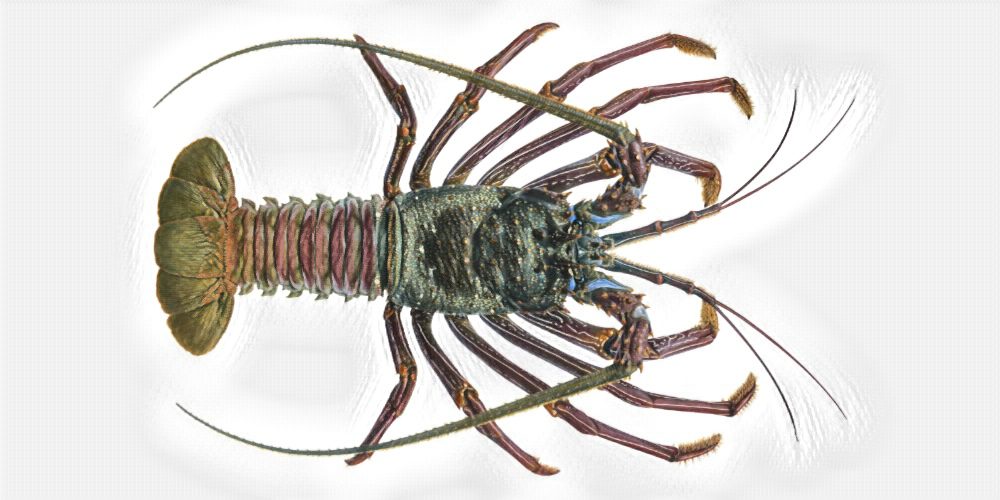
Painted Crayfish
Painted Rock Lobster
Also known as Northern Tropical Rock Lobster.
Has a sweet, rich flavour, low oiliness and moist, medium-firm flesh. Leg meat is often sweeter than tail. Can be halved and barbecued and the flesh holds together well during cooking. A popular choice for sashimi.
Origin: Queensland
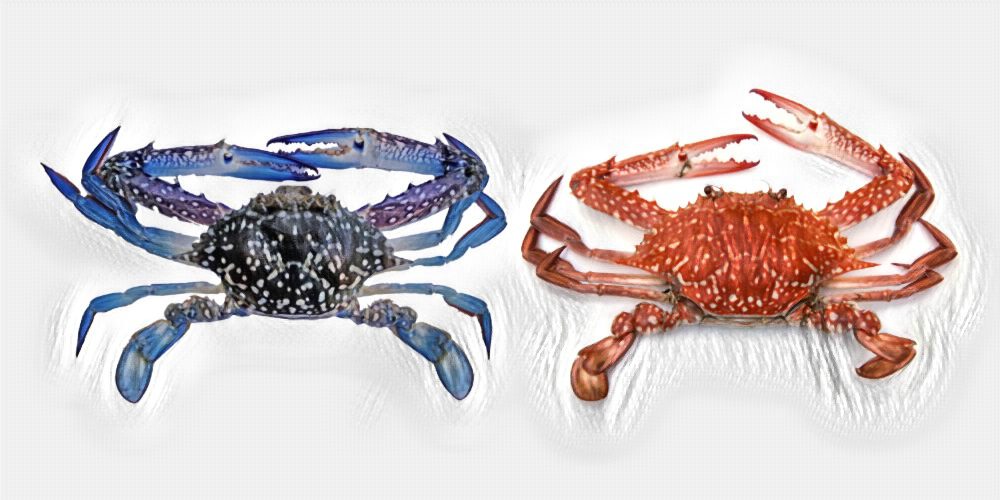
Sand Crab
Blue Swimmer Crab
Mild, sweet, nutty flavour, low oiliness and moist, evenly textured and firm flesh. Claw meat is firmer than that found in body and legs.
Origin: Queensland
OYSTERS, SCALLOPS & MUSSELS
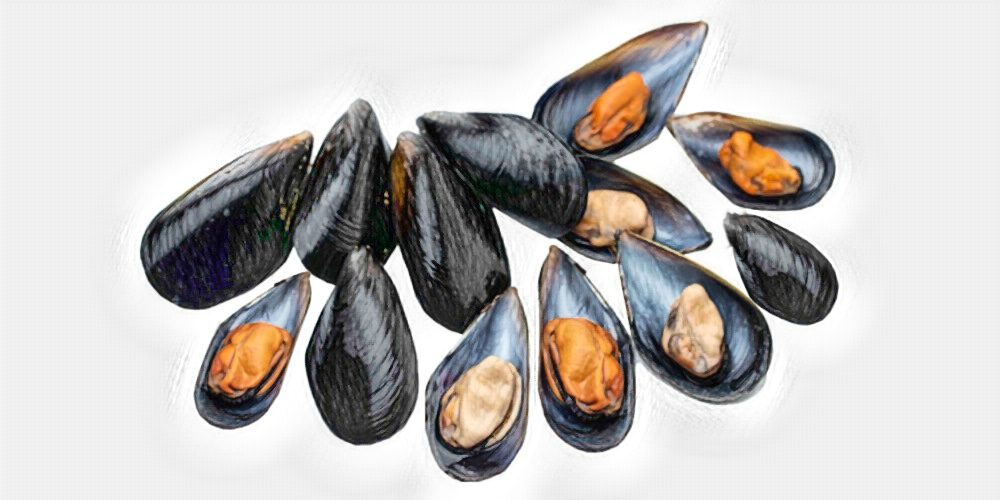
Blue Mussel
Blue Mussel
A rich, sweet flavour with high oiliness. Plump bodies that are moist, juicy and medium-textured. Generally smaller than New Zealand Green-Lipped mussels with a more robust flavour and less chewy/more tender flesh.
Origin: Victoria or South Australia (seasonal)

Pacific Oyster
Pacific Oyster
A fresh, mildly briny and creamy flavour with low to medium oiliness. Moist, soft, creamy flesh when raw, turning browny-grey when cooked.
Origin: Tasmania
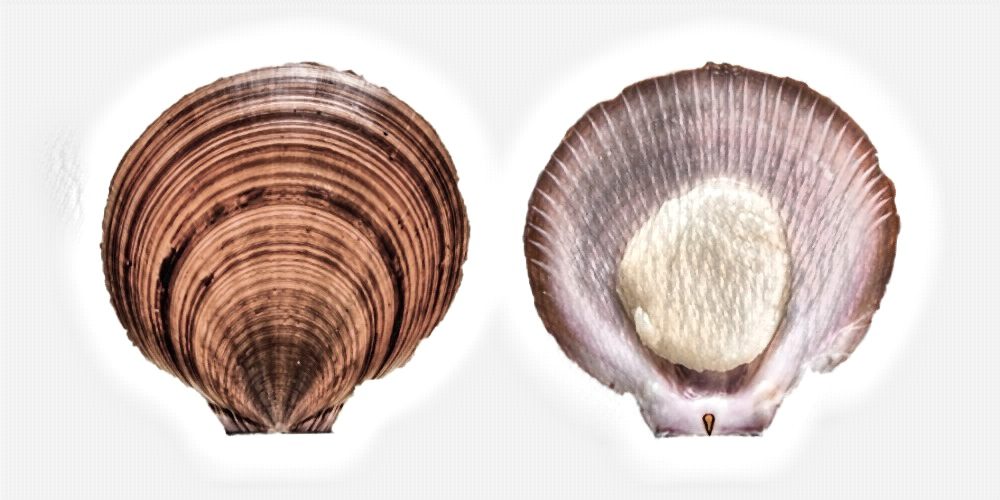
Saucer Scallop
Saucer Scallop
Also known as Queensland Scallop.
A delicate, clean, sweet flavour with low oiliness. Flesh is white when cooked, medium-firm (slightly firmer than Tasmanian Scallop), fibrous and moist.
Origin: Queensland or Western Australia, depending on supply

Tasmanian Scallop
Commercial Scallop
A rich, sweet flavour and low oiliness. Flesh is pale beige when cooked, moist and produces medium-firm, delicate fibres. Roe is orange to red.
Origin: Tasmania
SQUID & OCTOPUS
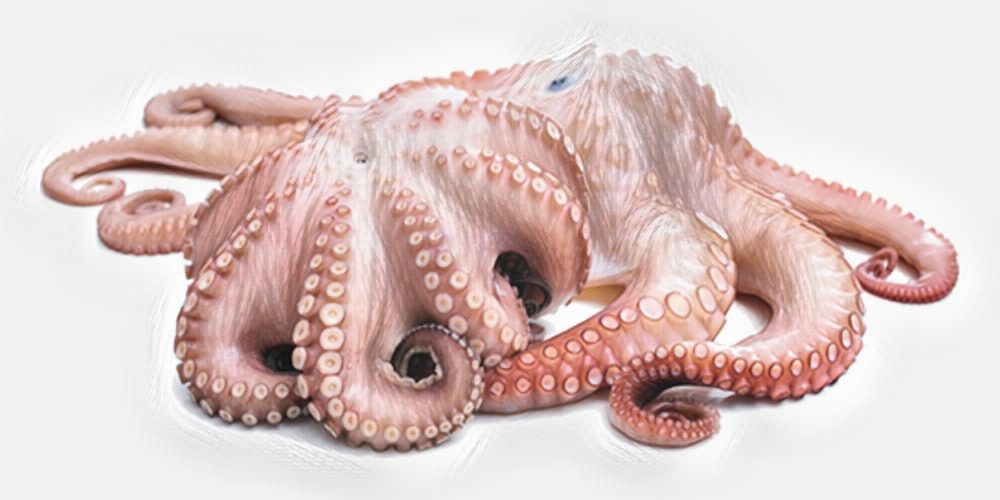
Baby Octopus
Baby Octopus
Mild, creamy flavour with moderate oiliness. Similar to octopus but baby octopuses have a more delicate and sweeter flavour, with a texture that is more tender and less chewy than larger octopuses.
Origin: Queensland

Octopus
Octopus
Mild, creamy flavour with moderate oiliness. Cream-coloured with grey toning, firm texture that’s denser than squid and a dry flesh. To be tender, cook either very quickly over high heat or very slowly over low heat.
Origin: Queensland

Squid
Gould’s Squid
Also known as Arrow Squid.
Has a mild, subtle flavour and low-medium oiliness. Pearly white flesh is dry with a firm texture. To be tender, cook either very quickly over high heat or very slowly over low heat.
Origin: Queensland or Victoria, depending on supply
